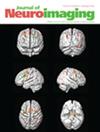Contrast-free visualization of distal trigeminal nerve segments using MR neurography
Abstract
Background and Purpose
The 3-dimensional cranial nerve imaging (CRANI) sequence may assist visualization of anatomical details of extraforaminal cranial nerves and aid in clinical diagnosis and preoperative planning. In this study, we investigated the feasibility of using a combined CRANI and magnetization-prepared rapid-acquisition gradient-echo (MPRAGE) imaging protocol to comprehensively identify trigeminal nerve projections.
Method
We evaluated the detection of distal regions of three branches of the ophthalmic nerve (V1), three branches of the maxillary nerve (V2), and five branches of the mandibular nerve (V3) in seven healthy adult subjects, with and without contrast injection. Nerve branches were rated on a 5-point scale by three observers. Interobserver reliability was studied using weighted kappa statistics and percentage agreement.
Results
Among V1 and V2 branches, the frontal nerve and infraorbital nerve were most successfully identified (average rating of 3.9, agreement >80%) in precontrast MPRAGE images. In V3 branches, lingual and inferior alveolar nerves were most successfully identified (average rating of 3.9, agreement >80%) in precontrast CRANI images, with an excellent average rating. In all cases except one, interobserver reliability was rated good to excellent. The buccal nerve was the only branch with a low average interobserver rating. Gadolinium contrast did not improve nerve segment visualization in our study. This may relate to the specific anatomic regions assessed, gadolinium dose, postcontrast image timing, and lack of pathology.
Conclusion
A combined CRANI and MPRAGE protocol can be combined to visualize distal branches of V1, V2, and V3 and has potential for clinical use.

 求助内容:
求助内容: 应助结果提醒方式:
应助结果提醒方式:


